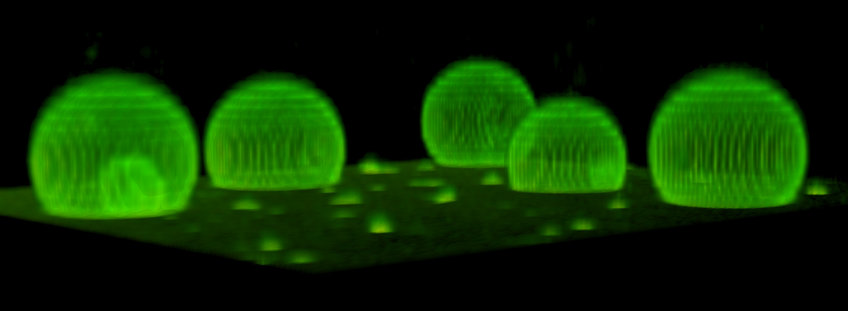Department of Cellular Biophysics
The primary scientific goal of the department is to develop technologies, based on physics, chemistry and materials science, for unraveling fundamental problems in cellular science, as well as to construct life-like materials. In this context, the department aims for a fundamental understanding of (i) specific topics related to the pathophysiology of cells and cell cohorts by analyzing and manipulating cells on the nanoscale; (ii) how to bottom-up assemble synthetic cell functions and materials, (iii) the role of growth factors in cellular mechanobiology, and (iv) the role of polysaccharides, in particular hyaluronan, of the extracellular matrix in regulating cell fate. In particular, we shed light on scientific questions related to individual and collective cell migration, cellular interactions with the environment (cell-cell and cell-matrix adhesion) in association with immune responses, wound healing, tissue morphogenesis and tumor development. All these projects benefit from the highly interdisciplinary nature of the department and the MPI of Medical Research, which provides expertise from various scientific directions.
Departmental Projects Joachim Spatz
Collective cell migration is the process of several cells migrating as a cohesive group, in which each individual actively coordinates its own movement with that of its neighbors.
The major aim of our interdisciplinary research is the bottom-up assembly of synthetic cells which can adhere, migrate and divide.
Find information about Fania Geiger's projects here. They include the development of hydrogel based stents against glaucoma and biomineralization.
We are interested in understanding how mammalian cells sense and respond to their mechanical microenvironment.
In many modern optical appliances unwanted light reflections reduce the image quality notably. Nocturnal moths have solved this problem million of years ago. A nanometre-sized structure on the surface of their eyes results in almost perfect anti-reflective properties. In the nanoAR workgroup we are developing new cost efficient methods to coat commercially available surfaces with a similar, biomimetic nanostructure.
Departmental Group Leaders
We're taking a cross-disciplinary approach, combining chemistry, biophysics, and materials science, to unlock the secrets of glycosaminoglycans (GAGs) interactions. By designing novel interfaces, we're enhancing cellular interactions and gaining new insights into the complexities of GAG interactions.
The goal of the group is to determine how nanoscale features of the extracellular environment control cell function. We focus on the spatial regulation of integrin receptor clustering and on the cross talk with other transmembrane receptors.







